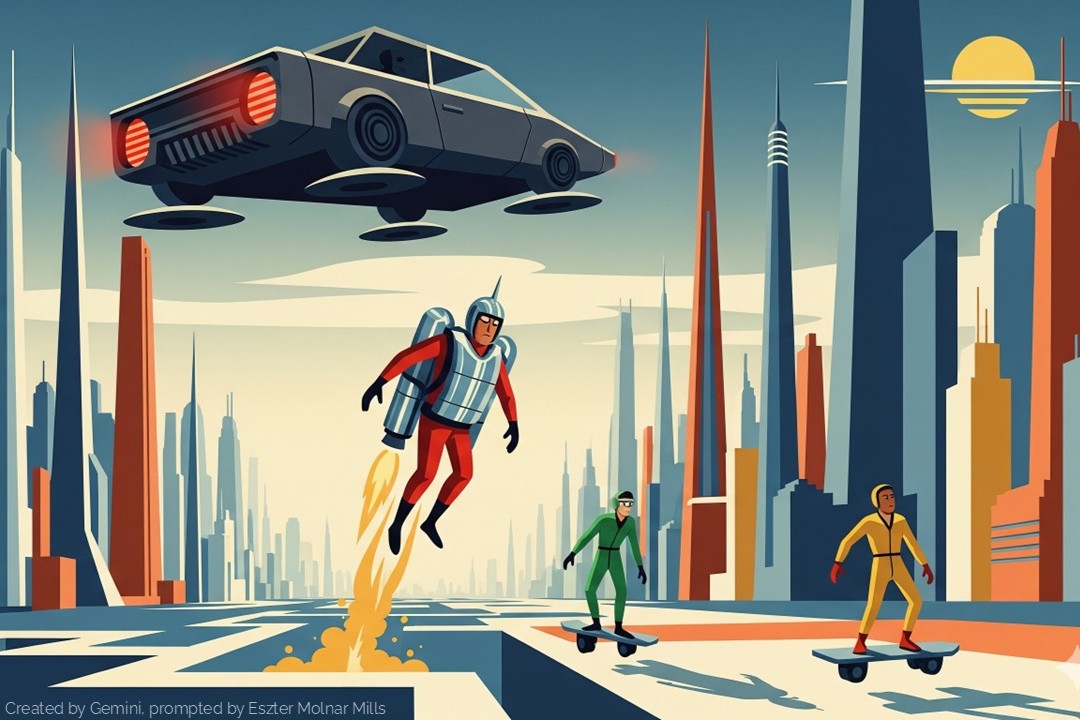One of the big challenges of the future workplace will be the widening age range of the workforce.
Either from desire (supported by longer life expectancy and better health), necessity (the increasing retirement age), or demand (the skills shortage) people will be working longer. In a reversal of recent trends, increasing university costs may lead to some young people exploring alternatives such as apprenticeships or entering the labour force earlier.
This multigenerational trend has been developing over recent years, and is set to continue into the future.
By 2031, a quarter of the workforce in the G7 states will be aged 55 or older
And that 25% figure is up nearly 10 percentage points from 2011 (1).
This brings a range of challenges that most leaders are unprepared for:
Only 6% of respondents strongly agree their leaders are equipped to lead a multi-generational workforce effectively. (2)
Only around 10% of companies include multigenerational workforce challenges in their leadership development. (3)
So what are the challenges for a leader?
The key issues break into two categories:
- Friction. Exacerbated by perceptions and stereotypes between people of different ages,
- Responsiveness. Does the leader and the organisation provide the opportunities and support that people need.
1. Friction in how we work
Much has been written about the differences between the four generations (Boomers, Generation X, Millennials, Gen-Z) – the majority of which is stereotypical and not backed up by research.
But there are likely to be some broad age-based differences, based on the technology, work practices and life events that people will have experienced, and the probable pressures of their stage of life and career. And these generate the potential for friction.
For example, the tendency of older workers to prefer to converse by speaking, whereas younger people are more likely to opt for text-based communication. There may be a contrast between younger people’s desire to innovate and change as opposed to older workers’ preference for status quo.
While the ‘snowflake vs. boomer’ stereotypes are questionable from an academic perspective, they are important: because people may perceive them to be true, this influences them to interpret any differences as rooted in generation or age, and not a result of individual, personal characteristics.
2. Different priorities according to stage of life and career
Attitudes to work will be shaped by external life events and factors such as childcare, caring for relatives, personal health – and by internal factors such as ambition and desire for advancement.
These issues complicate resource planning by impacting on staff retention, on levels of discretionary effort, and satisfaction with the Employee Value Proposition.
It is reasonable to assume that there will be age-based difference in how people respond to financial incentives, and what they value from an organisation in terms of bonuses, rewards, pensions, leave arrangements. This will require a more thoughtful and dynamic offering, otherwise you may not get the performance or retention results that you think you are incentivising.
3. Friction in social relations
As a general rule, younger people tend to be more radical in their politics and social attitudes. This has led to today’s stereotype of ‘woke social justice warriors’ at odds with older colleagues fearful of using the wrong terminology or not keeping up with current expectations.
And at the same time, workforces are becoming more atomised – teams that include hybrid working or are spread throughout different offices have reduced opportunities for social bonding. A recent news story about the death of the ‘after work pint’ identifies this atomisation, coupled with the trend of lower alcohol use among younger people.
Within a team with lower social bonds, it is more likely that people will form in-groups, and age is often a significant feature in how these are formed.
4. Friction in promotion and development
There are two common perceptions that can arise:
- Older workers prevent younger workers from taking on more advanced roles.
- Development opportunities are geared towards younger people.
The rise of the older workforce does pose challenges for Learning and Development teams:
A 2020 global survey found that fewer than 4% of organisations had integrated older workers into their talent systems. (4)
In both perceptions – of ‘blocking promotion’ and ‘not upskilling older staff’ – there are common problematic outcomes: individual frustration, unfulfilled potential (both personal and corporate) and reduced staff retention.
5. risk of discrimination
As age is a protected characteristic under the Equality Act, leaders and managers need to be conscious of how they are considering the age of their team members, and ensuring they do not inadvertently discriminate.
Approaches for leading a multigenerational workforce
Many – but not all – of these challenges can be addressed through good management practices:
1. Think of people as individuals
We are more than just our age – influences on our behaviour and attitudes are many and varied, including our socio-economic background, our personal values and beliefs, our specific life events and work history.
The important step is to avoid assumptions and explore people’s preferences through empathetic questions.
It may also help to consider that the language that was stereotypically used to describe the Millennial generation (entitled, poor communicators, difficult to work with) was also used to describe Generation Xers and Baby Boomers when they entered the work force (5) – indeed it has also been used to describe Gen Z.
2. Flexible working for all
Flexibility around hours worked, where possible, ensures that whatever their age, your people are able to work in a way that suits them – whether they are caring for a child, partner or parent, have healthcare needs, are studying part-time or have side projects and outside interests.
3. Focus on similarities
Rather than differences, bear in mind the similarities that cut across age profiles:
- We all want to be respected.
- We want leaders who are credible and trustworthy
- We all find change can be challenging. (6)
Adopting a person-centred, adaptive leadership approach is key to meeting these universal needs.
4. Make this part of your future planning
A multigenerational workforce is going to become ever more prevalent in the future, and leaders can take action now by adding this into their planning for the future.
Numerous pressure groups have identified specific attitudes and structures that need to be challenged for organisations to support their older workers – these reports can inform your planning. Try start with these questions:
- Imagine a scenario where 25% of your team are over 50. What will you need to do to ensure performance, productivity and professionalism across your team?
- What will you do to make sure that no workers are left behind by the future?
Make sure you are ready for the future workplace
It’s not just the multigenerational workforce that is coming. Leaders will have to face the challenges of new technology, disruptive change, and new ways of working.
Don’t get left behind by the future – explore our guide to take action now
References
Photo: Andrea Piacquadio on Pexels
(1) Bain and company (undated) Better with age
(2) Deloitte (2020) Global Human Capital Trends
(3) Lowe, Joshua & Barry, Erin & Grunberg, Neil. (2020). Improving Leader Effectiveness Across Multi-Generational Workforces. Journal of Leadership Studies.
(3) Deal, J. J., Altman, D. G., & Rogelberg, S. G. (2010). Millennials at work: What we know and what we need to do (if anything). Journal of Business and Psychology,
(4) World Economic Forum (2023) 3 ways organizations can empower older workers amid an ageing global workforce
(5) Deal, J. J., Altman, D. G., & Rogelberg, S. G. (2010). Millennials at work: What we know and what we need to do (if anything). Journal of Business and Psychology.
(6) Deal, J. J. (2007). Generational differences. Leadership Excellence





